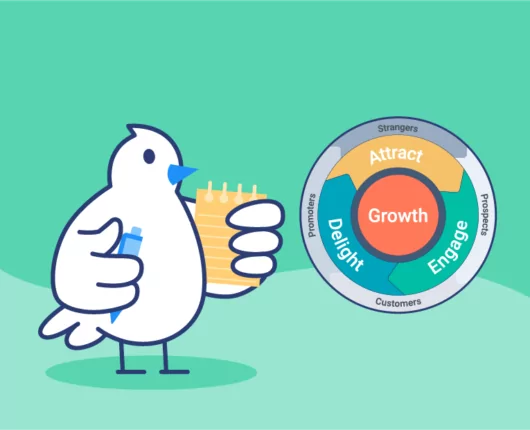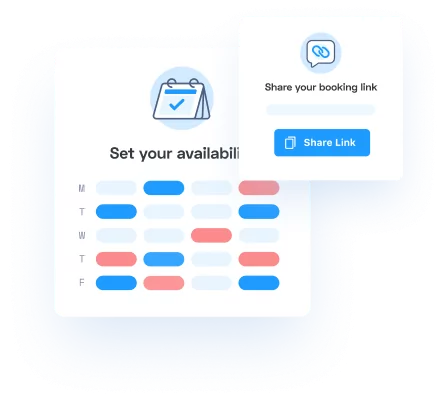
Ever been in a meeting without a notepad and assumed that you would remember all the details, only to forget some key piece of information later on?
Maybe you took good notes but lost the slip of paper. It can be embarrassing to follow up with customers and ask the same thing twice.
That’s why Customer Relationship Management tools have become so popular in the digital era. An AI assistant can help by transcribing meetings, highlighting key discussions, and managing action items, ensuring you never miss important details of what is happening during the meeting.
It’s easier than ever to keep track of client history and grow their accounts over time.
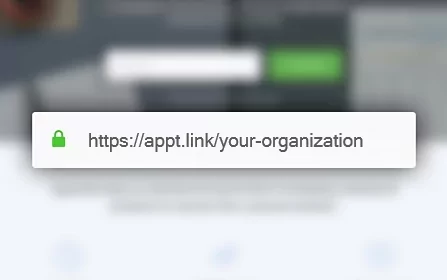
A successful meeting starts long before the actual event. Scheduling the engagement should be a breeze. In order to keep the back and forth emails to a minimum, it’s best to use an online scheduling tool
Not only will it speed up the process, but you can use custom form fields to collect the information you need and pass it to your CRM software of choice
Introduction to Meeting Notes
Meeting notes are a crucial aspect of team meetings, as they help to capture important details and action items discussed during the conversation. With the help of an AI-powered meeting note taker, teams can now automatically record and transcribe meetings, ensuring that all crucial details are captured and easily accessible.
This technology has revolutionized the way teams conduct meetings, making it easier to stay organized and focused on the discussion at hand. By using meeting notes, teams can turn meetings into actionable tasks and summaries, allowing them to make the most out of their meeting time.
What is a CRM, and how does it work?
If you’re discovering CRMs for the first time, don’t sweat it. You can think of them as a digital rolodex. Every time you meet with someone, you can attach notes to their customer history.
Collecting this information makes it easier for your team to get caught up on account history and provide quick, accurate support. Effective data management ensures your customer information stays organized, secure, and readily accessible across your organization, with all meetings recorded for future reference.
Even if you are a solo entrepreneur, a tool like this will help as you grow your client base. Just be sure to take care during the process in order to avoid compromising the personal information of customers.
AI meeting features can enhance the CRM’s functionality by providing automated summaries and insights, making it easier to stay organized and informed. So, what does a CRM look like, and how does it connect to Appointlet? It depends on which app you go for and what kind of features you need.
In this article, we will review two free CRM solutions (Hubspot and Zenkit) that are compatible with Zapier’s free plan, so you can start experimenting right away at no extra cost. These are just a couple of examples of CRM tools that are available.
Benefits of Using a CRM for Meeting Management
Using a CRM (Customer Relationship Management) system for meeting management can have a significant impact on team efficiency and the sales process. By integrating meeting notes and transcripts with CRM systems, teams can automatically log customer calls, meetings, and discussions, and generate meeting summaries, ensuring that all relevant data is captured and easily accessible.
This helps to streamline the sales process, allowing teams to focus on high-level tasks and close more deals. Additionally, CRM systems provide a single platform for managing meeting notes, action items, and customer interactions, making it easier for teams to stay on the same page and collaborate effectively.
Think of your CRM as a place to store data related to your customers and sales processes. Following meetings, you can import CRM meeting notes and data related to specific customers and sales actions directly into your CRM.
Tools for Virtual Meetings
But first, let’s talk about a couple of tools to amplify your virtual meetings and notetaking.
AI Notetakers
AI note takers, like Fathom and Fireflies, offer a range of tools to enhance virtual meetings, including high-quality meeting transcription and recording services. For example, with Fireflies, teams can automatically record and transcribe virtual meetings, ensuring that all crucial details are captured.
The platform supports integration with popular video conferencing tools like Microsoft Teams, Google Meet, and Zoom, making it easy to transcribe meetings and create detailed notes.
Fireflies’ AI meeting assistant can also help teams stay organized by automatically generating action items and task assignments from virtual meetings. By using Fireflies, teams can streamline their virtual meeting workflow, reduce pain points, and increase team efficiency. This ensures that all important details are captured and easily accessible, allowing teams to focus on high-level tasks and make the most out of their meeting time.
Zapier
Zapier isn’t a note-taking tool on its own, but it’s the glue that connects your virtual meetings to your CRM. You can use it to:
Automatically log meeting summaries or transcripts into your CRM
Create follow-up tasks based on meeting outcomes
Update contact records when new meetings are booked or completed
Example: After a Zoom meeting ends, use Zapier to auto-send the transcript to a Google Doc and link it to the appropriate contact or deal in your CRM.
Zapier turns one-time manual steps into repeatable, invisible automations—so you can focus on the conversation, not the admin.
Appointment Scheduling Software (like Appointlet)
Tools like Appointlet let leads or clients book time with your team directly, so there’s no back-and-forth emails required. But beyond just scheduling, they help with:
Auto-creating CRM records when a meeting is booked
Attaching meeting data (date, time, type) to customer timelines
Triggering pre-meeting prep or post-meeting follow-ups
The best part? Tools like Appointlet integrate seamlessly with both CRMs and calendar platforms, meaning everything stays synced.
(Want to simplify your booking process? Try Appointlet for free.)
Video Conferencing Platforms (Zoom, Google Meet, Microsoft Teams)
While obvious, these are core to virtual meetings. Most platforms now offer built-in transcription, live note-taking features, or integrations with note-taking and CRM tools.
Zoom’s Smart Summaries can auto-generate key points
Google Meet integrates with tools like Fireflies or tl;dv
Teams can sync meeting outcomes with Microsoft Dynamics or Notion
These platforms are no longer just about showing up—they’re a data source for everything that happens in your meetings.
Meeting Collaboration Tools (Notion, Fellow, or Hypercontext)
These tools help teams prep, document, and follow through on meetings in a more structured way. You can:
Build collaborative agendas
Assign follow-up tasks during the call
Sync action items back to your CRM or project management tool
If you often have recurring internal or customer-facing calls, these tools create a more standardized, collaborative note-taking process.
Supporting customers through the full lifecycle
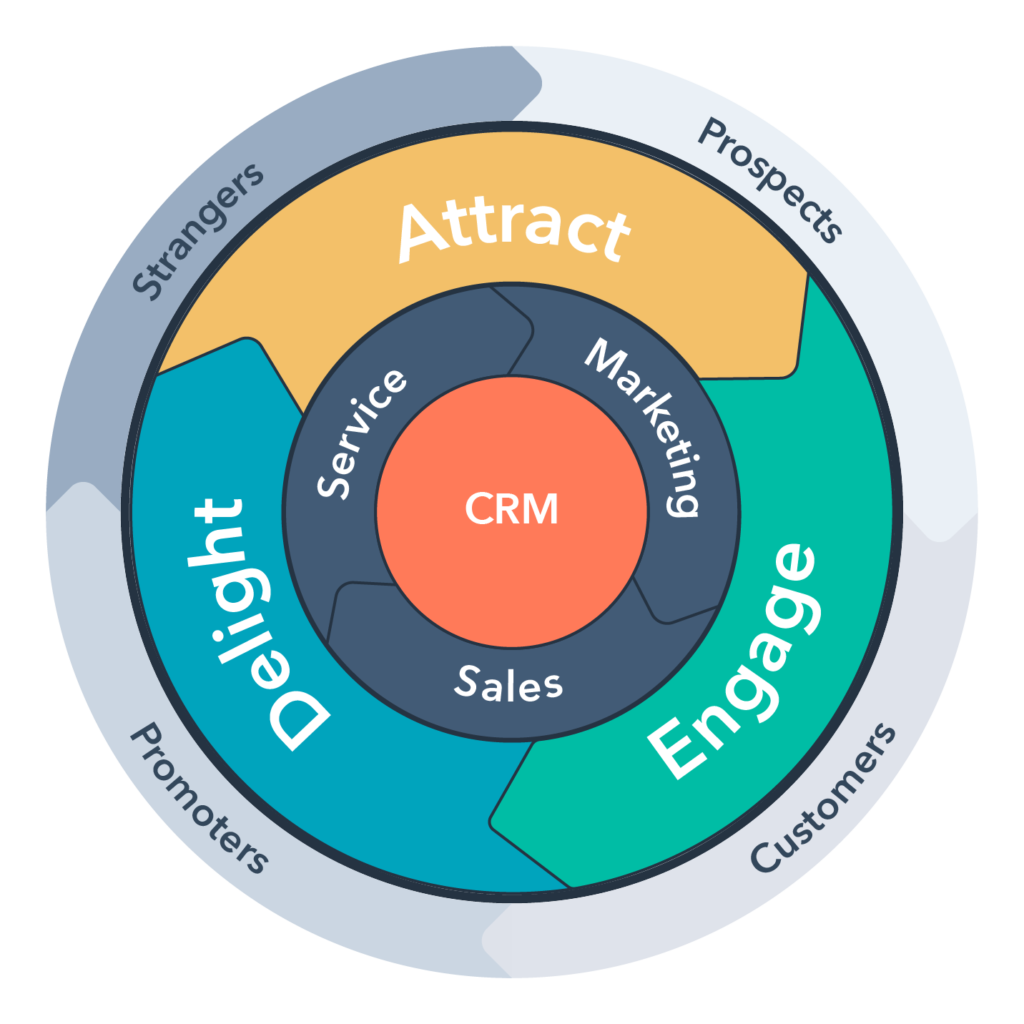
Hubspot’s flywheel – A model of the customer lifecycle
The image above, called a flywheel, depicts a customer’s journey through your brand. To read the graphic, begin at the top and move clockwise. You can see that, as people are attracted to your company, they read your marketing materials and begin to engage.
Ensuring that all touchpoints reflect your company values helps build trust and strengthens the connection with your audience. To maintain data security throughout the customer lifecycle, using reliable authentication methods such as a secure verify API can help safeguard customer information within your CRM. This type of API allows you to confirm user identities in real time, reduce the risk of fraudulent access, and ensure that sensitive data is only shared with verified individuals, ultimately reinforcing trust in your brand.
Your sales and customer support agents work with the client to make sure they’re delighted with their experience, and effectively approach prospects to convert them into loyal customers. Near the top left of the flywheel, we see those happy customers referring strangers to your company. In this way, the flywheel is a model of long-term, sustained growth.
Organizations can greatly benefit from using a CRM to manage customer interactions and data. With your online scheduling app, you can create custom meeting types that target the different phases of growth. For example, you might offer a free sales demo to new arrivals.
Later in their lifecycle, a consultation or support call is optional. Each meeting you schedule can present the customer with a new set of form fields, in order to learn more about them and their needs. All of that booking data can be added to your CRM’s customer records. You can also get valuable data about your customers’ expectations from your hosting, for instance.
Using an OS-based server allows you to access and analyze important customer data and better understand their needs.
CRM Example #1: Hubspot's Contact List
Hubspot is one of the most popular free CRMs on the market. They have a broad feature set, which can be a little intimidating at first, but valuable long term if your company needs a reliable, scalable solution.
If you are just getting started and want an entry level alternative, we recommend scrolling past this section and trying Zenkit first.
To get started with Hubspot, you will need the following set up:
Set up an Appointlet booking page
Configure Zapier to pass your booking data to Hubspot’s contact list
Hubspot also allows for the video recording of meetings to ensure all details are captured, aiding in note-taking and providing easy access to previously discussed content.
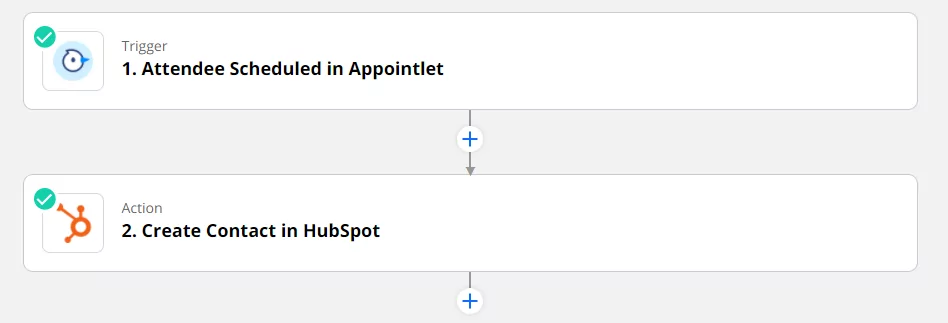
Connect your Zapier account to Hubspot
Any time a booking comes through Appointlet, Zapier will listen and evaluate the attendee’s details. If no customer record exists, a new one will be created.
Otherwise, the contact’s details will be updated using the form response data. You can view an example of the Hubspot contact list here:

CRM Example #2: Zenkit Contacts and To-Do Lists
We recommend Zenkit as an alternative to Hubspot. Their interface is clean and easy to navigate, making it more approachable for new users. As you can see in the screenshot below, their contact list is arranged in a vertical list.
Whenever bookings come through and Zapier generates a new contact, you can add information like meeting notes, a photo, and video files to make the contacts more easily recognizable at a glance.
We love how Zenkit includes a broad feature set for companies to use in tandem with their CRM. For example, you can ask Zapier to pass your booking data into one of Zenkit’s to-do lists. This could be useful for learning CRM tips as the ones explained in Small Business HQ guide, which can be a little intimidating at first, but valuable long term if your company needs a reliable, scalable solution.
The drag-and-drop kanban board design allows your team to track meetings alongside their other tasks. Zenkit simplifies the process of creating tasks and managing to-do lists, enhancing productivity and organization during meetings.
As bookings take place and are completed, you can take notes and advance the cards along your board until they reached a finished state.
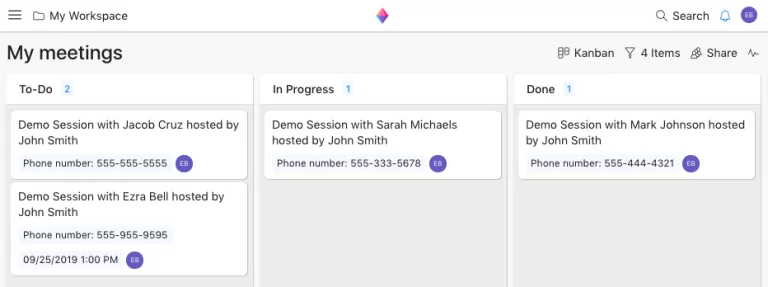
Want full instructions for the full Zapier / Zenkit CRM configuration?
You can visit https://zapier.com/apps/appointlet/integrations/zenkit to access our shared integration page. If you don’t have Appointlet and Zenkit accounts already, you will need to start with these steps:
Set up an Appointlet booking page
In Zenkit, create a new collection dedicated to your contact list
Set up an Appointlet “Attendee Scheduled” trigger
Set up a Zenkit “Create item” action to locate your list
Pull in the data fields that you need from your Appointlet booking
You can see in the example below that we pull in data like attendee name, email address and the meeting’s start and end times.
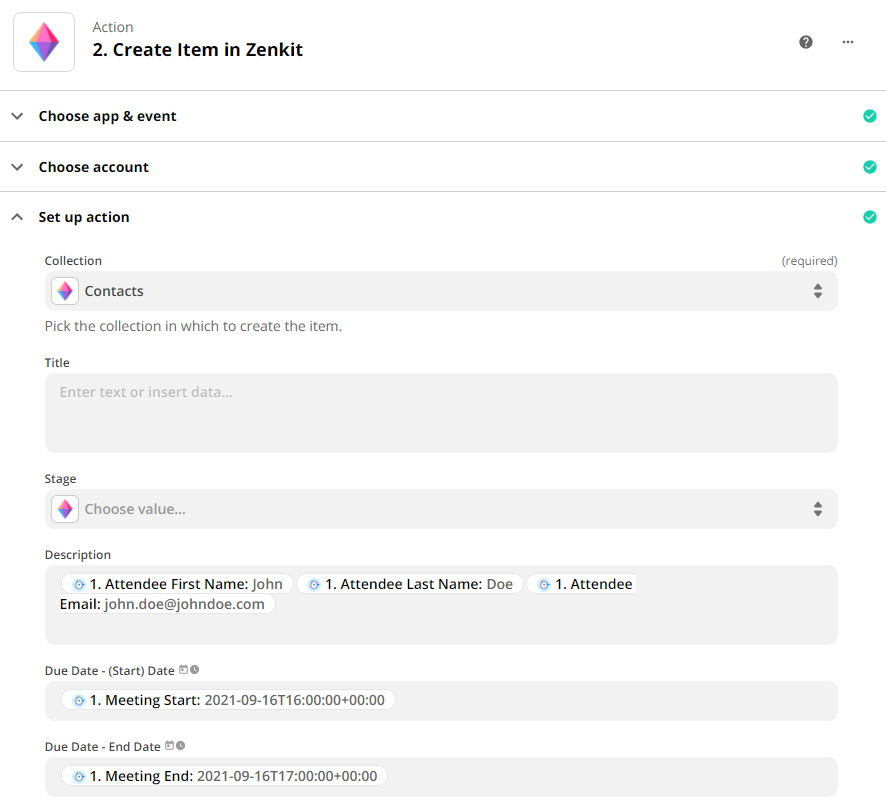
When you have tested your trigger and action to confirm that they work, go ahead and turn on the Zap. To test that the integration works, you can go to your Appointlet account and create a test booking.
It should take less than a minute for the new contact list item to show up. If you’re having issues with setting up your Zap, they do offer a support team to answer specific configuration questions.
Follow-ups and next steps
Follow-ups and next steps are a critical aspect of meeting management, as they ensure that action items and tasks are completed on time. With the help of AI-powered meeting note taking, teams can automatically generate follow-up emails and tasks, ensuring that all important details that matter are captured and assigned to the relevant team members.
This technology also allows teams to track progress and stay organized, making it easier to manage multiple projects and deadlines. By using AI-powered meeting note-taking, teams can say goodbye to tedious note-taking and focus on high-level tasks, such as strategy and decision-making. Additionally, AI assistants can help teams to answer questions, provide instant answers, and support teams in their daily work, making it easier to stay on top of tasks and meetings.
Access your booking data from within Appointlet
Appointlet already provides some powerful tools for reviewing your booking data. If you’re looking for improved customer data visibility, it’s a good idea to start by understanding what’s available within your scheduling tool. If you don’t already have an Appointlet account, you can sign up for free to try it today. Alternatively, you can also consider utilizing some of the best customer feedback tools for additional insights on customer data.
When you share a link to your booking page, the client is presented with a series of times to choose from, representing the team’s scheduled availability, and can receive updates through Slack channels. To complete the booking, they will fill out form fields that you present to them, as shown in the simple intake form example below:
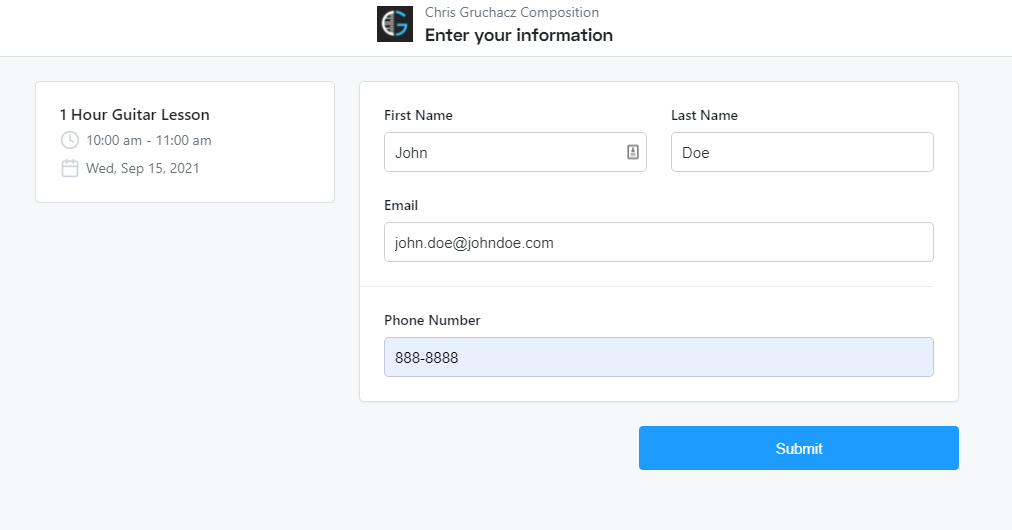
Demo of an Appointlet booking page
Each time someone books with you, their form data is registered on your Booking Dashboard. This user interface is easy to scroll through and navigate, so you can look at any past or future booking.
If you want to review a limited set of bookings, you can modify the date range and use search filters. If you prefer to look at this information in a spreadsheet, we offer CSV data exports as well.
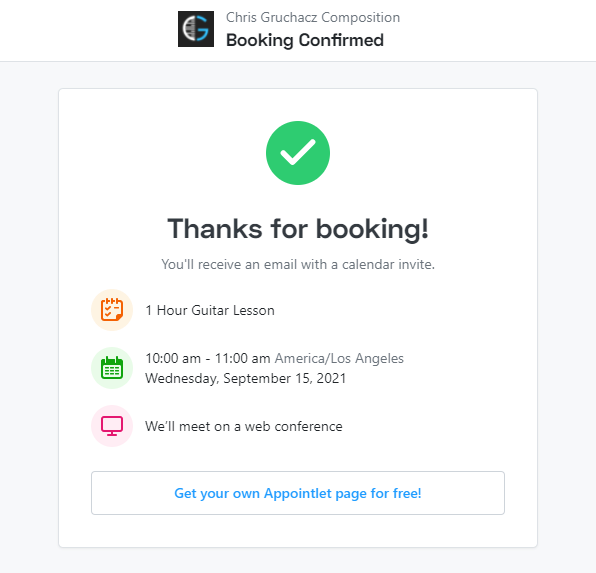
An in-app view of the booking details
Whether you stay with Appointlet’s built-in booking dashboard or introduce a CRM, the end goal is the same; you want improved customer data visibility. Appointlet can also process audio files for transcription to enhance data visibility. During EDW implementation, consolidating customer data can further enhance this visibility. As your customer volume grows, it’s important to track individual people and their journey with the company.
By monitoring their account details and setting up automation, you can offer proactive support at just the right moments. Targeted meeting types for the different flywheel phases will be the best way to ensure successful meetings for everyone.

Ezra Sandzer-Bell
Ezra is a SaaS product marketing manager and the founder of AudioCipher, a music software company. He previously worked at Appointlet as a customer success manager and marketer, helping business managers optimize their online scheduling workflows.
